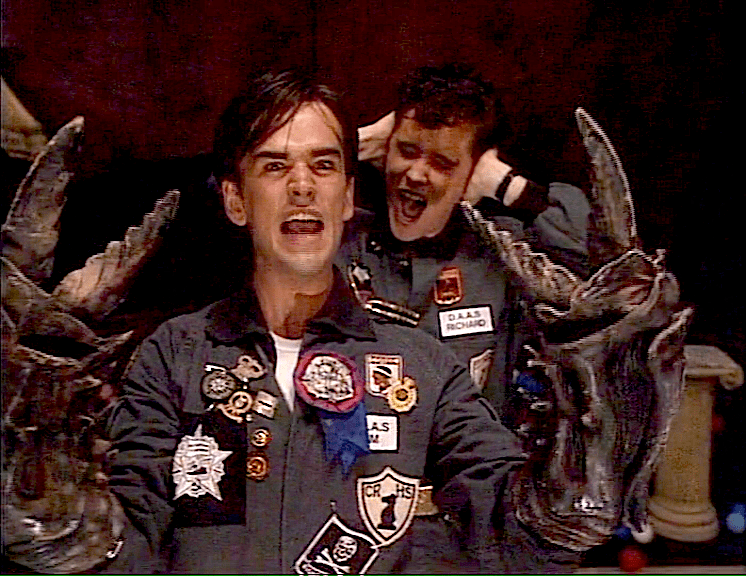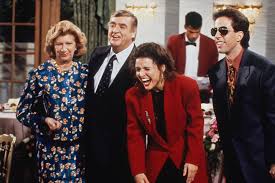Aristotle (Poetics) said ‘Comedy is an imitation of characters of a lower type – however, not in the sense of the word “bad” … it consists in some defect or ugliness which is not painful or destructive. To take an obvious example, the comic mask is ugly and distorted, but does not imply pain.’
Comic characters in Aristotle’s time were typically slaves, the ‘lower type’ of person in Ancient Greek society. The notion that all people are born equal, including foreign slaves, and that human flaws are ubiquitous, had not yet caught on.
Today’s comic characters may have a wider range of employment opportunities than those of Ancient Greece and Rome, but some fundamental elements remain. For example, George Costanza (Seinfeld) could be defined as a modern ‘lower type’. He’s intermittently jobless, broke, single and living with his parents; he’s as flawed and disempowered as an ancient slave.
Ancient and contemporary
The similarities between ancient and contemporary comic characters go beyond their social status. Deep human flaws are the most common component of all comic characters. These flaws can include qualities like weakness, insensitivity, compulsive dishonesty, overreaching ambition or any of the Seven Deadly Sins.
These kinds of qualities can be the prime motivators of a given comic character in their everyday life. In Kath & Kim, Kim’s selfishness is her most obvious and irreparable flaw, repeatedly leading her into trouble and blinding her to the feelings of others.
Comic characters often feature ironic combinations of characteristics. Roles in life can be juxtaposed with incongruous flaws or outlooks. Olympics administrators who have little interest in sport (John, Brian and Gina, The Games), a newsreader who doesn’t read the paper (Michael Moore, Frontline) or a mother who is obsessed with herself (Mother & Son) are all regularly forced to act against their nature. This inner-conflict means that intentionality and outcome rarely match. And their ‘defect’ is permanent.
Comic Lack of Proportion
Simple flaws can work in subtle ways not overtly apparent to the audience, yet capable of driving a comic character to extreme action. Jerry Seinfeld (Seinfeld) seems to be a well-rounded guy. He’s smart, likable, professionally capable and attractive to women.
His moral compass is largely accurate and he’s generous with his time and belongings. So why do we laugh at him? Jerry’s main flaw is his lack of proportion and perspective. This renders all his benign qualities redundant. It drives his stories and represents the theme of the series.
Jerry often becomes obsessed with trivial things and treats important things as trivial. When he drops a potential girlfriend because he suspects she has fake breasts (‘The Implants’), he’s being too particular about a trivial issue (surely true love is blind to implants?)
An instance of Jerry treating the important as trivial comes when he watches a man undergo vital abdominal surgery (‘The Junior Mint’). Jerry nibbles on mints as if he’s watching a movie or ballgame.
Bottom line, whether you as a writer want your characters to be loved or loathed, the flaws must be exaggerated. Even if their only flaw is a lack of perspective (like the eponymous Jerry Seinfeld), it will work best if it is clear and larger than life.
For more comedy writing tips, read ‘The Cheeky Monkey – Writing Narrative Comedy’ [Now in e-books]


